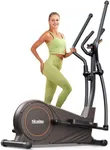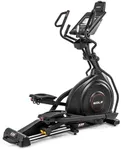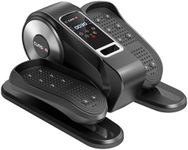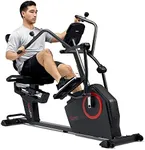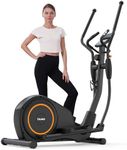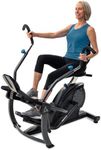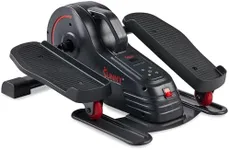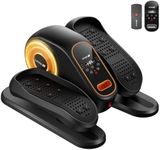Buying Guide for the Best Elliptical Machines
Choosing the right elliptical machine can make a big difference in your fitness journey. Ellipticals are popular for providing a low-impact, full-body workout that’s easy on the joints. When shopping for one, it’s important to think about your fitness goals, available space, and how often you plan to use the machine. Understanding the key features will help you find a model that matches your needs and keeps you motivated to exercise.Stride LengthStride length is the distance your feet move back and forth during each elliptical motion. This is important because it affects how natural and comfortable the workout feels. Shorter stride lengths (around 14-16 inches) are usually better for shorter users or those with limited space, while longer stride lengths (18-22 inches) are ideal for taller users or those who want a more running-like motion. To pick the right stride length, consider your height and how you want the workout to feel—if you’re taller or want a more intense workout, go for a longer stride.
Resistance LevelsResistance levels determine how hard it is to pedal on the elliptical. More resistance levels mean you can fine-tune your workout intensity and progress over time. Basic machines may offer 8-10 levels, which is enough for light exercise or beginners, while more advanced models can have 20 or more, suitable for those who want challenging workouts or plan to share the machine with others. Think about your current fitness level and how much you want to challenge yourself—if you want room to grow, choose a machine with more resistance options.
Flywheel WeightThe flywheel is the part that creates the smooth, gliding motion of the elliptical. Heavier flywheels (usually 18 pounds or more) provide a smoother and quieter ride, which is especially important for regular or intense use. Lighter flywheels can feel choppier and may not be as durable. If you plan to use the elliptical frequently or want a gym-like feel, look for a heavier flywheel. For occasional or light use, a lighter flywheel may be sufficient.
Incline AdjustmentIncline adjustment lets you change the slope of your workout, targeting different muscle groups and increasing intensity. Some ellipticals have manual incline, which you adjust by hand, while others offer motorized incline that you can change with the push of a button. If you want to vary your workouts and challenge yourself, look for a machine with incline options. If you prefer a simple, straightforward workout, incline may not be as important.
Console FeaturesThe console is the control panel where you see your workout stats and select programs. Features can range from basic displays showing time, speed, and calories, to advanced consoles with heart rate monitoring, Bluetooth connectivity, and built-in workout programs. If you like tracking your progress or want entertainment options, look for a more advanced console. If you just want to get on and go, a simple display will do the job.
Size and PortabilityElliptical machines come in various sizes, and some are designed to be more compact or foldable for easy storage. If you have limited space, measure your available area and check the machine’s dimensions before buying. Some models have wheels for easy moving, which is helpful if you need to store the machine after use. Choose a size that fits comfortably in your space and matches your storage needs.
Weight CapacityWeight capacity refers to the maximum user weight the elliptical can safely support. This is important for safety and durability. Most machines support between 250 and 350 pounds, but higher-capacity models are available. Always choose a machine with a weight limit that’s comfortably above your own weight to ensure stability and longevity.

